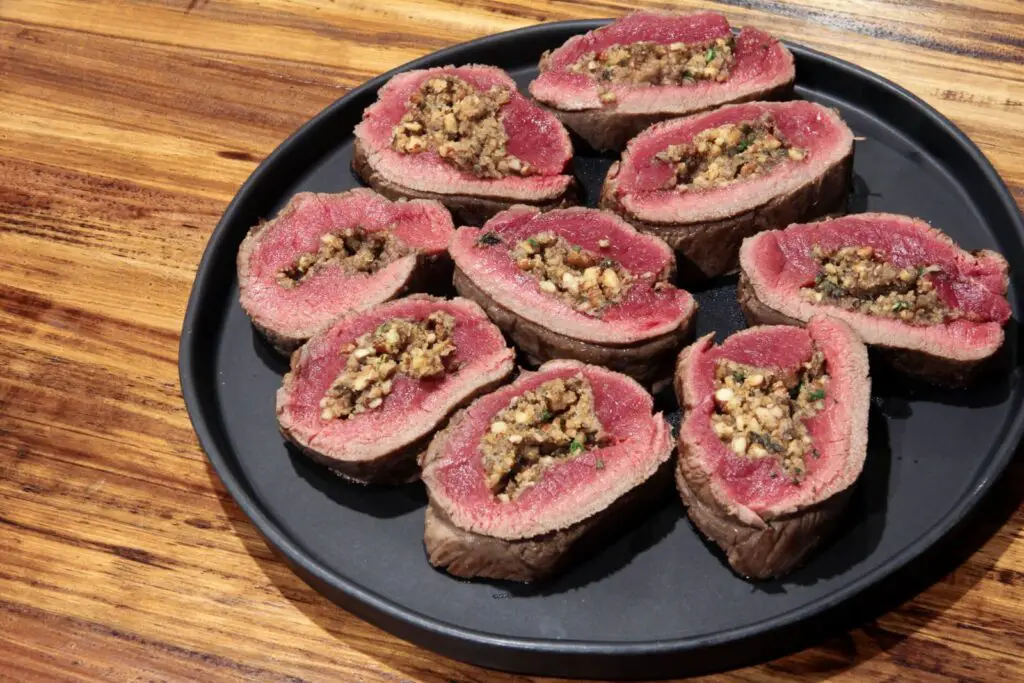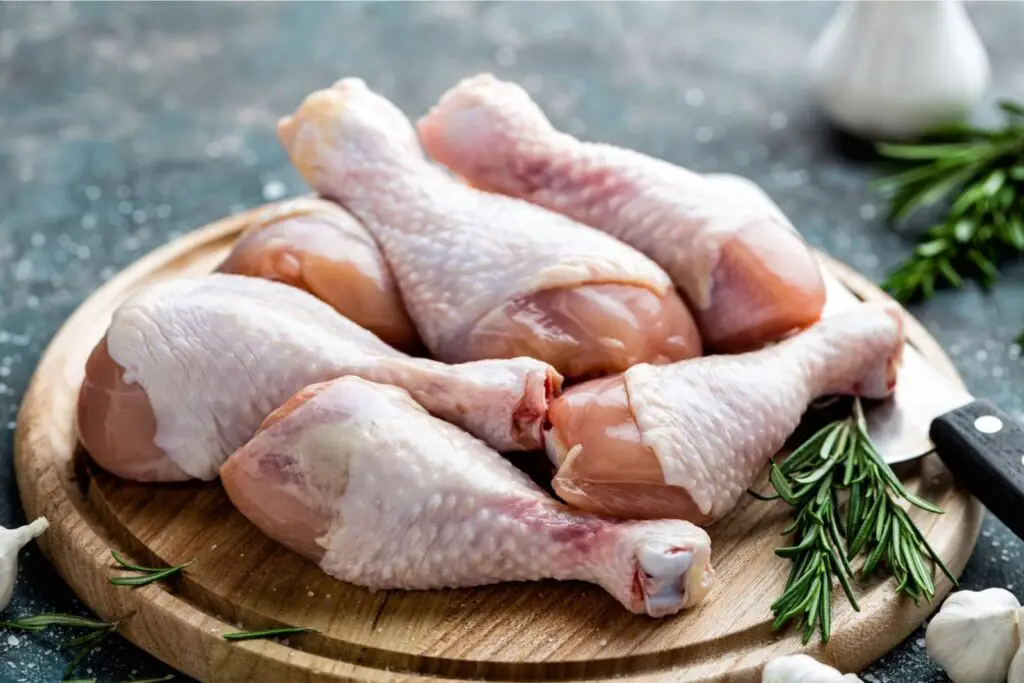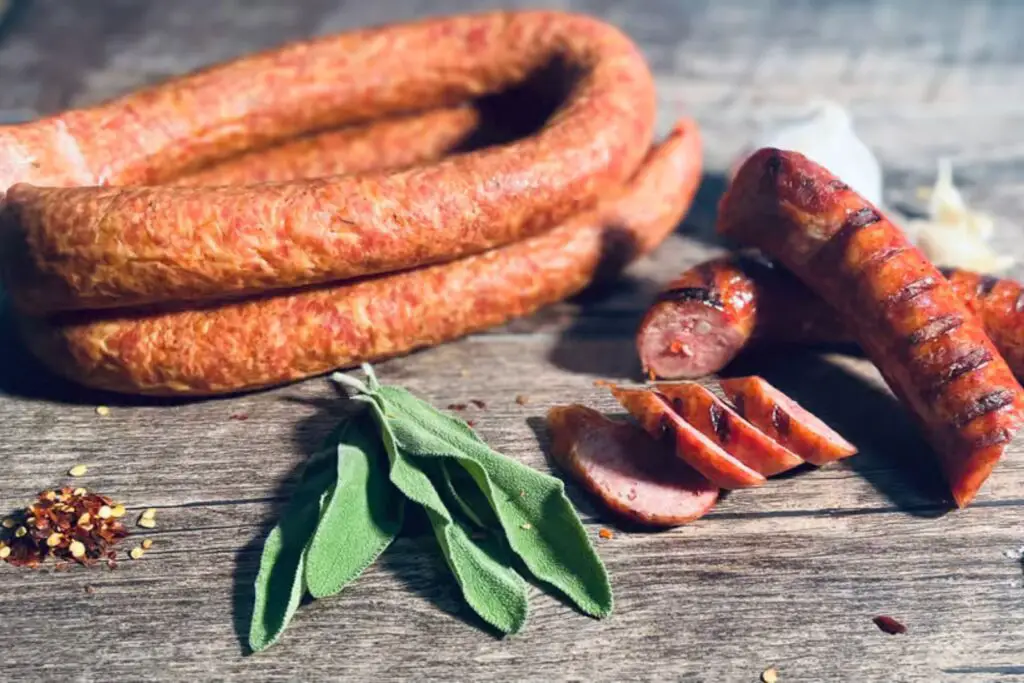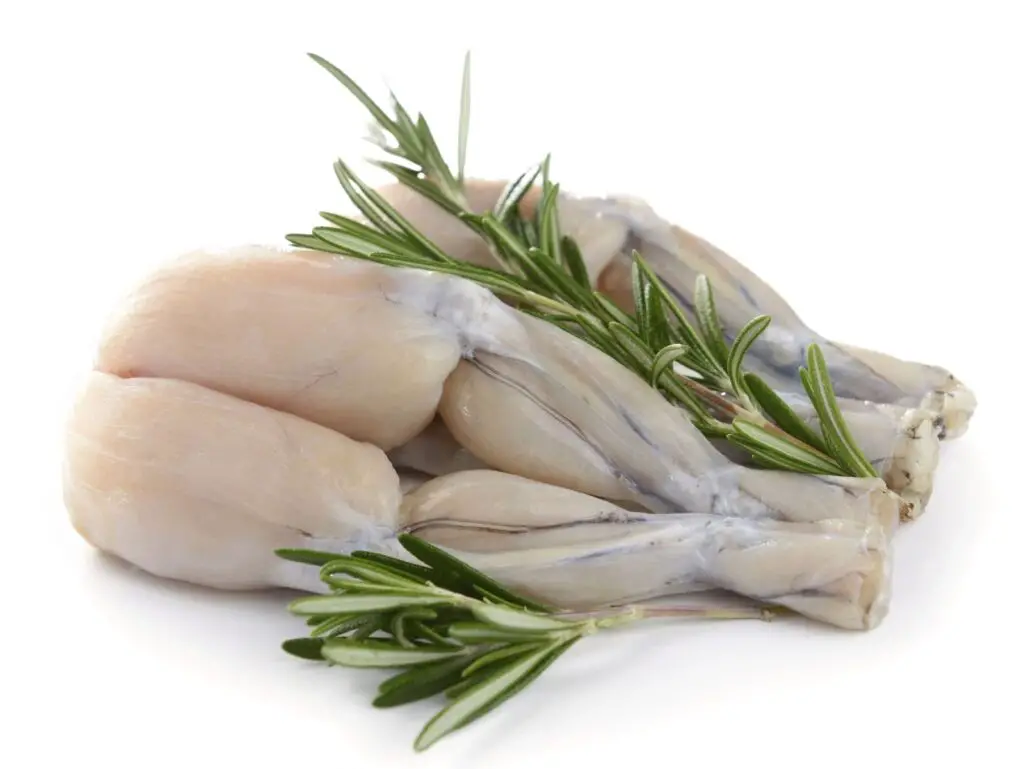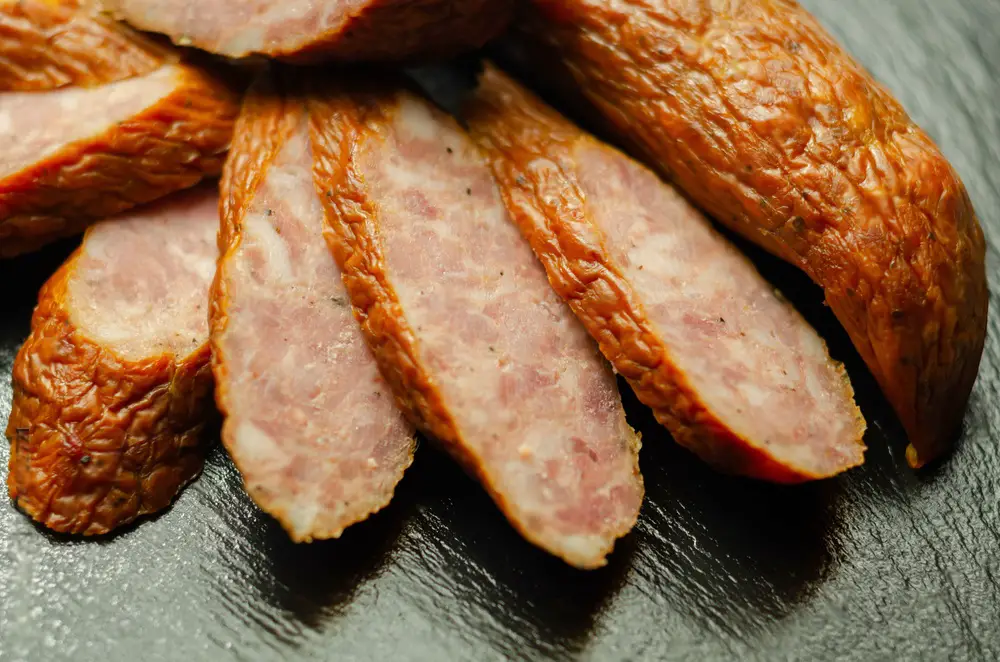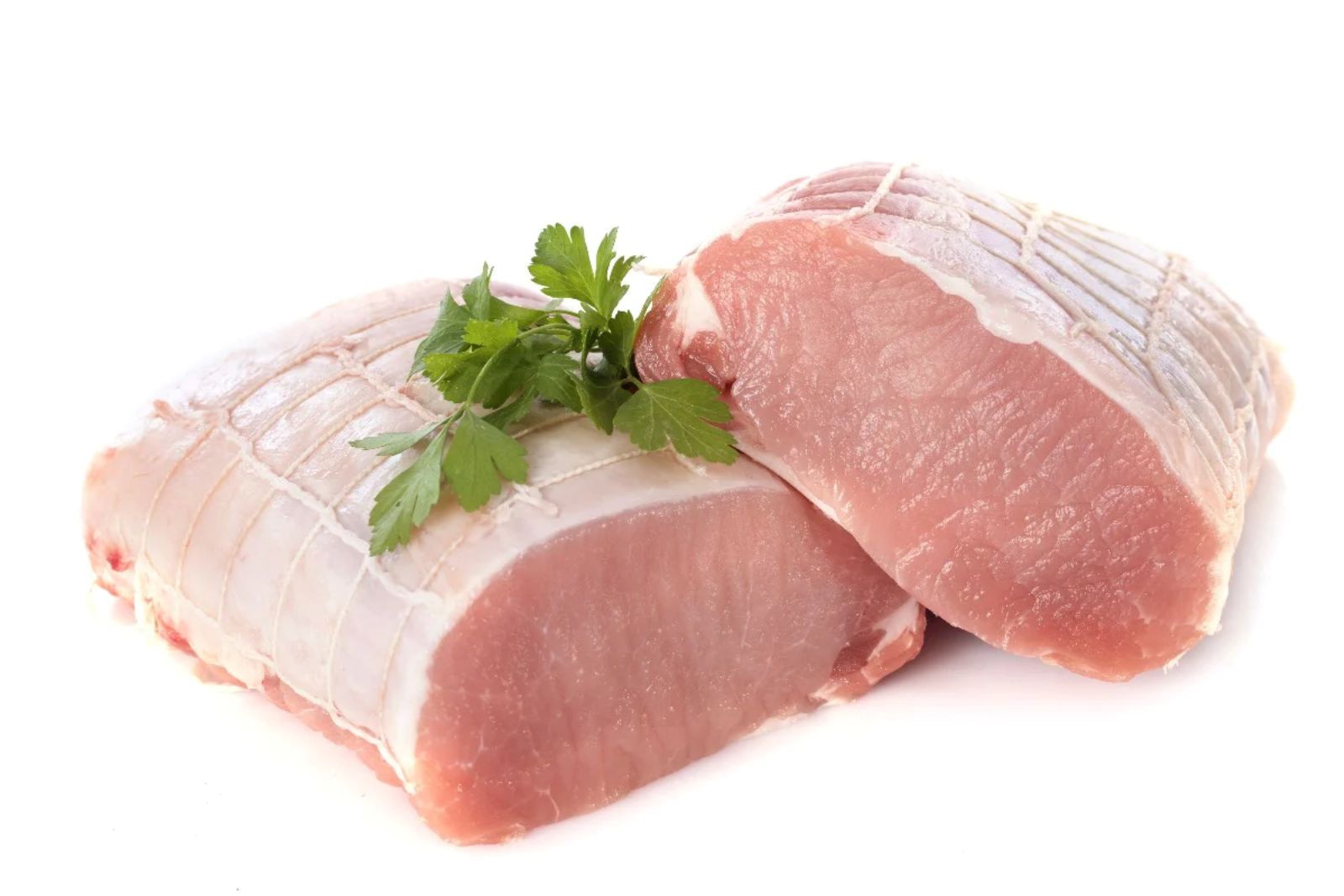
Pork loin is a versatile cut of meat that can be used to prepare a wide range of delicious dishes. Whether you’ve purchased a large pork loin and want to preserve it for future meals or you simply want to take advantage of a great sale at your local butcher, freezing pork loin is an excellent way to ensure it stays fresh and ready for your culinary creations. In this article, we’ll provide you with a step-by-step guide on how to properly freeze pork loin, so you can enjoy its succulent flavor and tender texture whenever you desire.
Here’s a comprehensive guide on how to freeze pork loin:
Step 1: Select a high-quality pork loin
The first step in freezing pork loin is selecting a high-quality cut of meat. This initial step is crucial as it sets the foundation for the overall quality and taste of the frozen pork loin. Here’s why selecting a top-notch pork loin is so important:
- Flavor and Texture: High-quality pork loin tends to be more flavorful and tender than lower-quality cuts. When you freeze a well-marbled and fresh pork loin, you’re essentially locking in that delicious flavor and preserving its natural tenderness. On the other hand, if you start with a lower-quality cut that is tough or less flavorful, freezing won’t magically improve its taste or texture.
- Freezer Burn Prevention: The marbling (intramuscular fat) in a good-quality pork loin helps protect the meat from freezer burn. Freezer burn occurs when air comes into contact with the meat’s surface, causing it to dry out and develop unpleasant, dry, and discolored spots. Quality pork loin has a better chance of resisting freezer burn due to the fat content, ensuring your frozen pork loin remains moist and palatable.
- Safety and Freshness: High-quality pork loin is less likely to have off-putting odors or discolorations, which can be indicators of spoilage. When you start with a fresh and healthy cut of meat, you’re reducing the risk of freezing any underlying issues or bacteria. This not only ensures the safety of your frozen pork loin but also maintains its overall freshness.
- Versatility: Premium pork loin provides you with more options for cooking and seasoning. Whether you plan to roast, grill, or slow-cook the pork loin in the future, having a high-quality starting point allows you to explore a wider range of culinary possibilities. Lower-quality cuts may limit your options and result in a less satisfying final dish.
Step 2: Prep the pork loin
After carefully selecting a high-quality pork loin, the next crucial step in freezing this delectable cut of meat is proper preparation. Preparing the pork loin before freezing not only ensures its long-term freshness but also contributes to maintaining its flavor and texture. Here’s why it’s important to prep the pork loin before freezing:
- Removing Packaging: Most pork loins come packaged in some form, whether it’s plastic wrap, butcher paper, or a Styrofoam tray covered with plastic. These packaging materials may not be suitable for long-term freezer storage. Removing the original packaging is essential as it can expose the meat to air, potentially causing freezer burn. Additionally, it allows you to inspect the pork loin more closely for any visible issues or inconsistencies.
- Moisture Management: Excess moisture is a common culprit behind freezer burn. When you freeze meat with moisture on its surface, ice crystals can form, leading to changes in texture and taste. Patting the pork loin dry with paper towels is an effective way to remove this moisture. It’s particularly important if the meat has been sitting in packaging that may have accumulated condensation. By eliminating excess moisture, you help preserve the pork loin’s quality during freezing.
- Minimizing Freezer Burn: Properly prepped pork loin reduces the risk of freezer burn, a condition that occurs when air comes into contact with the meat’s surface. Freezer burn can result in dry and discolored patches, negatively affecting the pork loin’s overall appeal and taste. By removing moisture and ensuring the meat is adequately wrapped, you create a protective barrier that minimizes the chances of freezer burn.
- Quality Assurance: Careful preparation allows you to inspect the pork loin closely. This step is essential for identifying any irregularities, such as visible fat deposits, bone fragments, or small defects that might not have been apparent in the packaging. Addressing these issues before freezing ensures that your frozen pork loin will be of the highest quality when you decide to use it.
Can I freeze pork loin with bones?
Yes, you can freeze pork loin with bones. When freezing pork loin with bones, ensure it’s tightly wrapped in plastic wrap, aluminum foil, or placed in airtight, freezer-safe containers to protect it from freezer burn and moisture loss. Properly stored, frozen pork loin with bones can maintain its quality and flavor for an extended period, similar to boneless pork loin.
Step 3: Portion the pork loin
When it comes to freezing pork loin effectively, one of the often-overlooked but highly practical steps is portioning the meat before freezing it. This step involves dividing the pork loin into smaller servings or portions that align with your future cooking needs and preferences. Here’s why portioning is an essential part of the freezing process:
- Customized Serving Sizes: Portioning allows you to tailor the size of each serving according to your specific cooking plans. Whether you’re cooking for a solo meal or a family feast, having pre-cut portions makes it easy to defrost and use only the amount of pork loin you need, reducing the chances of food waste. This customization ensures you’re not thawing more meat than necessary.
- Faster and More Convenient Defrosting: Smaller portions of pork loin tend to thaw more quickly than a large, solid piece of meat. This not only saves time but also gives you greater flexibility in meal planning. If you decide on a whim to prepare a pork dish, you can defrost a smaller portion relatively quickly, making last-minute cooking more feasible.
- Versatility in Cooking: Portioning opens up a world of culinary possibilities. You can prepare different dishes with varying portion sizes, from pork chops for grilling to thin slices for stir-frying or larger sections for roasting. Having a variety of portion sizes at your disposal enhances your ability to experiment with different recipes and cooking methods.
- Reduced Risk of Repeated Freezing: Every time you freeze and thaw meat, you risk compromising its quality. By portioning the pork loin before freezing, you can avoid repeatedly freezing and thawing the entire cut. This preserves the overall freshness and flavor of the meat and minimizes the chances of texture deterioration.
- Economical: Portioning your pork loin before freezing can also help you budget more effectively. You can purchase larger cuts when they are on sale and divide them into smaller portions for future use. This can result in significant cost savings over time, as you take advantage of bulk purchasing without worrying about spoilage.
Can I freeze pork loin slices individually for easier use?
Freezing pork loin slices individually is a convenient option. Wrap each slice separately and store them together in a resealable freezer bag or container. This allows you to easily access and use individual portions.
Step 4: Wrap and seal the portions
Once you’ve expertly portioned your pork loin for freezing, the next critical step is to properly wrap and seal each individual portion. This step is paramount to preserving the meat’s quality and preventing undesirable issues like freezer burn and absorption of freezer odors. Here’s why wrapping and sealing are essential:
- Freezer Burn Prevention: One of the primary reasons for wrapping pork loin portions is to safeguard them against freezer burn. Freezer burn occurs when air comes into contact with the meat’s surface, causing moisture to evaporate and leaving behind dry and discolored patches. By wrapping each portion tightly, you create a protective barrier that minimizes air exposure, reducing the risk of freezer burn.
- Maintaining Texture and Flavor: Properly sealed portions help maintain the pork loin’s texture and flavor during freezing. The moisture within the meat is retained, preventing it from drying out or becoming excessively tough. This means that when you eventually thaw and cook the pork loin, it will taste as delicious and tender as the day it was frozen.
- Preventing Odor Absorption: Pork loin can easily absorb odors from the freezer if left exposed. Wrapping each portion in airtight packaging, such as plastic wrap, aluminum foil, or vacuum-sealed bags, acts as a barrier, preventing the transfer of unwanted odors from other freezer items. This ensures that your pork loin retains its natural aroma and doesn’t acquire off-putting flavors.
- Storage Efficiency: Well-wrapped portions are easier to organize and stack in your freezer. This efficient use of space helps you make the most of your freezer’s capacity and makes it simpler to access the specific portion you need without disturbing the others.
- Labeling Convenience: Wrapping and sealing individual portions also provide a convenient surface for labeling. You can clearly mark each package with essential information like the date of freezing, portion size, and any additional details about the cut. This labeling ensures you can easily identify and manage your frozen pork loin inventory.
Is vacuum-sealing necessary for freezing pork loin?
While vacuum-sealing provides an airtight seal, it’s not strictly necessary. Wrapping pork loin tightly in plastic wrap or aluminum foil, followed by sealing it in a resealable freezer bag or airtight container, can also effectively protect it from freezer burn.
Step 5: Label and date the packages
As you prepare to store your portions of pork loin in the freezer, one often-overlooked yet critical step is labeling and dating each package. This simple but essential task plays a pivotal role in ensuring that your frozen pork loin remains organized, safe to eat, and as fresh as possible. Here’s why labeling and dating are crucial:
- Identification: Labeling each package with the cut of meat and portion size provides clear identification. This is particularly helpful if you have multiple packages of different meats or cuts in your freezer. It ensures you can easily distinguish your pork loin from other items, avoiding any confusion when it’s time to cook.
- Freezing Date: Adding the freezing date to each package is vital for maintaining food safety. It allows you to keep track of how long the pork loin has been in the freezer. Meats, including pork loin, have recommended storage durations to ensure they remain safe to eat. Labeling the date helps you avoid consuming meat that has been stored for too long, reducing the risk of spoilage or compromised quality.
- Rotation: Proper labeling allows you to follow the “first in, first out” (FIFO) principle. By using the oldest packages first, you minimize the chances of meat going past its recommended storage time. This practice ensures that your meals are always made with the freshest frozen pork loin available, maintaining the best possible taste and texture.
- Convenience: When you plan your meals or need to defrost a specific portion, having clear labels with all the necessary information saves time and minimizes guesswork. You can quickly assess the size of the portion, its contents, and how long it has been in the freezer.
- Minimizing Food Waste: Properly labeled packages help you keep tabs on your frozen inventory. Knowing exactly what you have on hand reduces the likelihood of accidentally buying more pork loin when you already have enough in the freezer. This not only saves money but also reduces food waste.
- Allergen or Dietary Information: If you have specific dietary requirements or allergies to consider, labeling can be a lifesaver. You can include additional information, such as whether the pork loin was marinated, seasoned, or if it contains any allergens, making meal planning easier and safer.
Step 6: Arrange the packages for freezing
Once you’ve meticulously wrapped, sealed, labeled, and dated your portions of pork loin, the next strategic move in the freezing process is arranging these packages for their initial freeze. Placing them on a baking sheet or tray and then transferring them to the freezer may seem like an extra step, but it serves several important purposes:
- Preventing Clumping: Pork loin portions, like many meats, have a tendency to stick together when they’re initially placed in the freezer. If you stack or overcrowd them in the freezer without some form of separation, they can freeze together into a solid block. This makes it difficult to extract individual portions without thawing the entire block.
- Easy Access: By arranging the wrapped and sealed portions on a baking sheet or tray, you create an initial freezing surface that ensures each package remains separate. This means that when you return to the freezer to retrieve a portion for cooking, you can easily access and remove just the amount you need without disturbing the others.
- Faster Freezing: The use of a baking sheet or tray provides ample airflow around each package. This facilitates faster freezing of the meat, which is important for maintaining the meat’s quality. Rapid freezing helps to preserve the meat’s texture and flavor by minimizing the formation of large ice crystals within the meat.
- Organization: Placing packages on a tray also contributes to better freezer organization. It prevents packages from shifting and becoming disorganized, ensuring that you can quickly locate the specific portion you’re looking for. This is especially helpful in a crowded freezer.
- Minimizing Temperature Fluctuations: When you open the freezer door, warm air can rush in, causing temperature fluctuations. The presence of a baking sheet or tray with packages can act as a buffer, helping to stabilize the freezer’s temperature more quickly once the door is closed again.
Step 7: Finalize the storage
After you’ve allowed your portions of pork loin to freeze solid on the baking sheet or tray, the next critical step in the freezing process is to transfer them into a more permanent storage solution, such as a resealable freezer bag or an airtight container. This additional layer of protection serves several crucial purposes:
- Additional Barrier Against Freezer Burn: While the initial wrapping and sealing of each portion help protect against freezer burn, transferring them to a resealable freezer bag or container provides an extra layer of defense. These containers are designed to be airtight, further reducing the risk of air exposure that can lead to freezer burn. This ensures that your pork loin remains moist and fresh throughout its time in the freezer.
- Improved Organization: Freezer bags or containers are more space-efficient and stackable than loose packages. They allow you to maximize the use of your freezer’s available space and maintain a well-organized freezer. This makes it easier to access and manage your frozen pork loin and other frozen items.
- Reduced Risk of Odor Contamination: Resealable freezer bags and containers also help protect the pork loin from absorbing unwanted odors from other freezer items. The airtight seal creates a barrier that prevents cross-contamination of flavors, ensuring that your pork loin retains its natural aroma and taste.
- Easy Retrieval: When you’re ready to use a portion of frozen pork loin, the use of resealable bags or containers simplifies the retrieval process. You can quickly locate and remove the desired package without disturbing the others, reducing the chances of exposing the remaining portions to temperature fluctuations.
- Label Visibility: If you’ve labeled your individual packages as recommended in Step 5, transferring them to resealable bags or containers makes it easier to see and read the labels. This ensures that you can still identify the contents, portion size, and freezing date for each package, even after they’re stored in the freezer.
Step 8: Store in the freezer
Once you’ve meticulously prepared and packaged your portions of pork loin, the final step is to store them in the freezer. Proper storage in the freezer is crucial for maintaining the meat’s freshness, taste, and safety. Here’s why storing your frozen pork loin correctly is essential:
- Maintaining Freshness: The freezer provides a controlled environment where the temperature is consistently kept at or below 0°F (-18°C). This low temperature effectively halts the growth of microorganisms and slows down enzyme activity, preserving the freshness of your pork loin. It ensures that the meat remains safe to eat for an extended period.
- Preventing Freezer Burn: Placing your wrapped and sealed portions in the freezer helps safeguard them against freezer burn. The freezing temperature prevents moisture on the meat’s surface from evaporating, reducing the chances of developing dry, discolored spots that can result from freezer burn.
- Long-Term Storage: Storing pork loin in the freezer allows you to keep it for an extended period. While the exact duration depends on factors like packaging quality and storage conditions, pork loin can generally remain in excellent condition for up to six months or longer in a well-maintained freezer.
- Temperature Consistency: Ensure that the pork loin is stored in the coldest part of your freezer. This area maintains a consistent and lower temperature, which is essential for preserving the meat’s quality. Avoid placing it near the freezer door, as this area is more prone to temperature fluctuations when the door is opened frequently.
- Space Organization: Properly organizing your freezer space makes it easier to access and use your frozen pork loin. Keep it in a dedicated section of your freezer to prevent accidental displacement or damage when searching for other items.
- Safety and Compliance: Storing food at or below 0°F (-18°C) is a recommended temperature for food safety. It helps prevent the growth of harmful bacteria and ensures that your frozen pork loin remains safe to eat when you eventually decide to use it.
Other related questions
How do I defrost pork loin?
Pork loin can be safely defrosted in the refrigerator, which maintains a consistent temperature of 40°F (4°C) or lower. Place the wrapped pork loin on a tray to catch any potential drips, and allow it to thaw slowly over 24-48 hours or longer, depending on its size. Alternatively, you can use the defrost function on a microwave if needed for quicker thawing, but exercise caution to avoid cooking the meat during the process.
Can I refreeze pork loin?
It is generally safe to refreeze pork loin if it has been thawed in the refrigerator and handled properly. However, repeated freezing and thawing can affect the meat’s texture and quality. It’s recommended to use the pork loin promptly after the first thaw to maintain its best taste and texture, and avoid unnecessary refreezing if possible.
How do I know if the pork loin has gone bad after being frozen?
To determine if frozen pork loin has gone bad, first inspect it for any noticeable signs of spoilage, such as a foul or rancid odor, unusual discoloration, or the presence of ice crystals on the surface. If any of these signs are present, it’s best to discard the meat. Additionally, if the pork loin has been stored in the freezer beyond its recommended safe storage period, it may have deteriorated in quality, affecting its taste and texture. Always prioritize food safety and quality when assessing frozen meat for consumption.
How can I repurpose frozen pork loin in recipes once it’s thawed?
Thawed pork loin can be used in various recipes, including stir-fries, stews, sandwiches, and salads. Marinating or seasoning the meat before cooking can enhance its flavor and versatility. Always ensure thorough cooking for food safety.
Can I freeze pork loin that’s already cooked?
Yes, you can freeze cooked pork loin. Allow it to cool to room temperature, then wrap it tightly in plastic wrap or aluminum foil to prevent freezer burn. Place the wrapped portions in a resealable freezer bag or an airtight container, and label them with the freezing date. Cooked pork loin can be safely stored in the freezer for 2-3 months while maintaining its flavor and quality.
Can I freeze pork loin with spices and herbs?
Yes, pork loin seasoned with spices and herbs can be frozen. Ensure it’s well-wrapped or vacuum-sealed to preserve the flavor. Properly frozen pork loin can retain its seasoning for an extended period.
Can I freeze marinated pork loin?
Yes, marinated pork loin can be frozen for future use. Ensure the pork loin is well-coated with the marinade to preserve its flavors during freezing. Place the marinated pork loin in airtight containers or freezer bags, remove excess air to prevent freezer burn, and label with the freezing date. Marinated pork loin can be stored in the freezer for up to 2-3 months while maintaining its taste and quality when properly frozen and stored.


